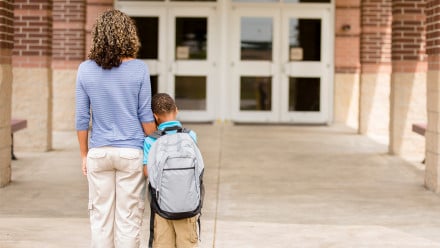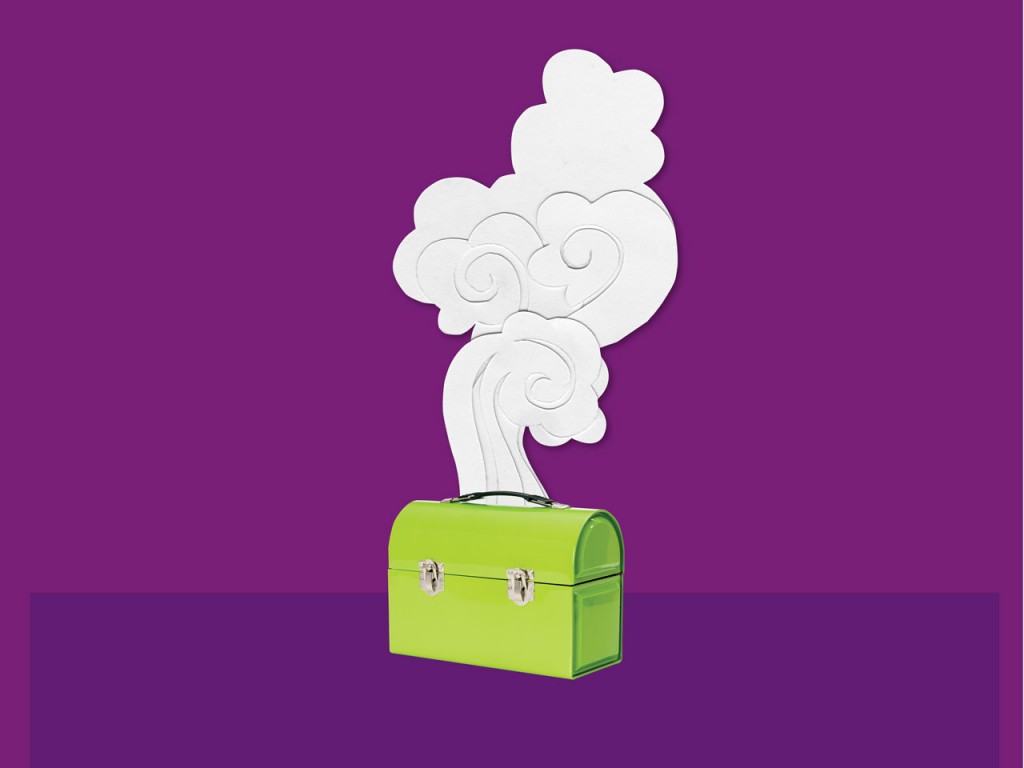Photo: iStock, Illustration: Erin McPhee
The other day my four-year-old daughter, Mallika, came home from preschool, plonked her bag on the floor, and told me, “Mummy, Ellie brought really stinky food to school today.” I was taken aback by her description of her Asian classmate’s lunch. Growing up in Australia in the late ’80s, I was the Indian kid with the “stinky food.” Every day I dreaded opening my lunch box, and the scent of chicken biryani wafting out. I would brace myself for the chorus of “Eeewww!” and “What’s that?” I much preferred when I was allowed to bring money for cafeteria pizza or meatballs.
Raising kids in multicultural Canada 20 years later, I assumed that this youngest generation would instinctively value racial diversity, instead of singling each other out for “stinky food.” Our neighbourhood of Toronto is known as both “Tehranto” and Koreatown North. Vietnamese pho joints jostle for space with Mexican eateries, and playground banter is carried out in Japanese, Russian and Tagalog. So I never seriously worried about how our South Asian family would fit into this mix, and I never expected my own daughter to wrinkle her nose at the contents of another kid’s lunch box.

Here’s my challenge to white parents this school year’Of course, I’m aware of how tenuous the concept of tolerance can be in day-to-day city interactions. Tensions can simmer under a veneer of multiculturalism, whether it’s a Jamaican woman at the grocery store railing against “those unclean Asians” or a crotchety white guy on public transit rudely addressing a hijab-clad woman as “you Arab.” I just didn’t fully comprehend that it would start so early.
In preparation for parenthood, my husband, Rajesh, read NurtureShock by Po Bronson and Ashley Merryman. He showed me the chapter called “Why White Parents Don’t Talk About Race,” which detailed research indicating that children of all backgrounds can notice skin colour differences as early as six months old. The authors argue that simply living in an ethnically-diverse environment is not enough, and that students in the most diverse schools, in fact, self-segregate even more. It’s not just Caucasian families, either: Parents across cultures don’t discuss race with their kids because, they report, it’s just too uncomfortable a subject to broach.
We try to make opportunities to talk to Mallika and her little brother, Dax, about race—it’s too important to ignore. We explain that her friend Lauren, whose mother is Vietnamese and whose father is Jamaican, shows genetic traits of both parents. When Mallika mentioned a preference for her doll’s blond hair, I pointed out the various hair types of all her friends. The general theme for these conversations has been that there is no good or bad—just differences, and that we shouldn’t pretend these differences don’t exist.
Unlike me, Mallika won’t be ostracized for the contents of her lunch bag when she starts junior kindergarten this month. She’s a picky eater, and much to my chagrin, she picks at most of the Indian staples I make, preferring plain pasta. A couple of days after the stinky-food incident, I brought it up again. “So, why did you think Ellie’s lunch was stinky?” I asked.
“It wasn’t really stinky, actually,” she replied. “It was just a little bit smelly. Like Indian food. It’s called ‘sushi’ and Ellie gave me some. It tasted good.”
Aparita Bhandari is an arts reporter and diplomat’s daughter who spent her childhood globe-trotting.
Read more:
Do you think your kid might be racist?
I thought a loving home would be enough for my biracial child


